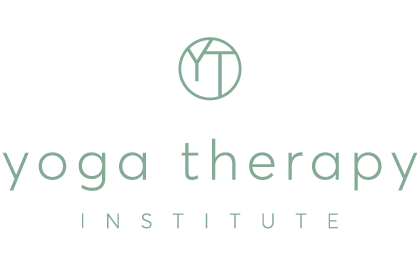Mantra and Sounds can have a prevailing impact upon us and listening to sounds can provoke an emotional response When applying this therapeutically, it can have lasting and profound effects, especially when chanting mantras.
Sound has a lot of power; the voice has a tremendous influence…What is universally true is that sounds can have a powerful influence on us. T K V Desikachar, The Heart of Yoga (1)
A mantra is a repeated word or sound that assists to calm the mind and at the same time support the body to relax. The mantra may have religious significance, or it may be a positive affirmation. The word Mantra comes from two Sanskrit roots ‘manas’ for ‘mind’ and ‘tra’ for ‘tool’. There are different interpretations to the meaning, such as a tool that helps us overcome suffering and obstacles, and another is it protects the person who recites it. Mantra can therefore be ‘a means of protecting one’s thoughts from distractions, a means of concentrating the mind in one direction.’ (2)
While it is believed mantras originated from the Vedic tradition in India some thousands of years ago, they are also practiced in other ancient cultures from Australian Indigenous to Middle Eastern to Asian to African and in faiths such as Buddhism, Hinduism, Taoism, Islamic, Judaism and Christianity. The style and structure of the mantra can vary according to the tradition; however, each are practiced for their unique and distinctive healing effects – combining sound with breath with concentration.
The Mantra Om
In yoga, many of us are familiar with the mantra Om or Aum. It is often chanted at the opening and closing of a yoga class. Om is usually the first experience many have of chanting even if they are unaware of its origin as the primordial sound and its beneficial healing qualities of aligning the breath with the mind, inducing calm and improving concentration. Chanting Om with others, including in a group, can also offer connection and sense of community. Om may seem such a simple sound, yet it has powerful properties of connecting the ‘individual consciousness to the consciousness of the cosmos’.
However, mention chanting to a client as a therapeutic approach and they may not feel comfortable doing it. Using our voice can surface vulnerabilities and a sense of personal exposure. Therefore, using Om or other universal sounds that people are familiar with like ‘ah’ or ‘mmm’, can be a valuable introduction to chanting.
Introducing Clients to Mantra
Possibly the most effective way to introduce clients to chanting is not to say, ‘let’s chant some Sanskrit’. Instead, it is preferable to offer an invitation to try a new, perhaps different healing approach. Yoga Therapist Amy Weintraub, previous guest speaker of the Yoga Therapy Institute and author of Yoga Skills for Therapists, suggests asking ‘Would you like to try a different approach to calming yourself down when you are feeling uptight and anxious? Let me know if it is uncomfortable in any way. We’re going to use a few universal tones that have been shown to soothe the autonomic nervous system.’
Tips from Dr. Shirley Telles
Dr Shirley Telles discussed the therapeutic benefits of mantras, especially when incorporated into meditation, pranayama and particularly asana practice in her Yoga Therapy for Anxiety workshop She suggests clients use Brahmari or Bee Breath throughout their practice to help reduce anxiety and increase a sense of calm. She encourages yoga therapists to do the practice with the client.
Invite your client to inhale through the nostrils with focus on the exhalation. Exhale slowly through the nostrils, making a deep buzzing sound in the throat like a bee. Invite your clients to join with you incorporating the mantras in a three-part pranayama:
Ahh for upper chest,
Aww for mid-belly, and
Mmm for lower abdomen.
Brahmari, along with the mantras can be incorporated into the asana practice. It will support calming, a slowing of the nervous system.
Mantra – Asana for the Mind, its role in Ayurveda
Dr David Frawley, internationally recognised teacher of Ayurveda and yoga, maintains chanting mantras is more important than asana. With its emphasis on pranayama and meditation, mantra provides wellbeing and adaptability to the mind. He describes it as Asana for the Mind and after the use of herbs, the most effective healing approach in Ayurveda. He particularly supports all yoga and ayurvedic practices to begin and end with mantra due to its therapeutic properties.
- Desikachar, T. K. V. (1995). The Heart of Yoga. Rochester, Vermont: Inner Traditions International.
- Crosthwaite, H. (2007). The Art of Vedic Chanting. USA: Trafford Publishing.
- Weintraub, A. (2012). Yoga Skills for Therapists. New York: W W Norton & Company.
- Frawley, D. (1999). Yoga and Ayurveda. Wisconsin: Lotus Press.
